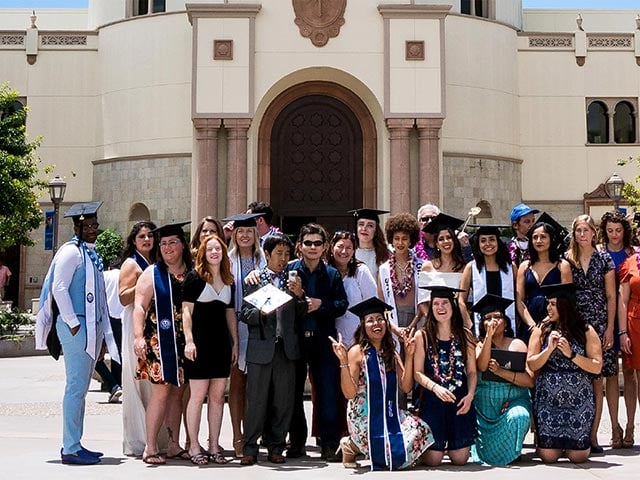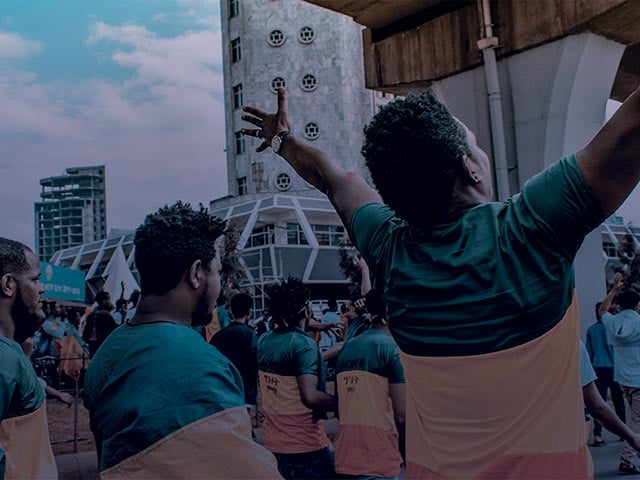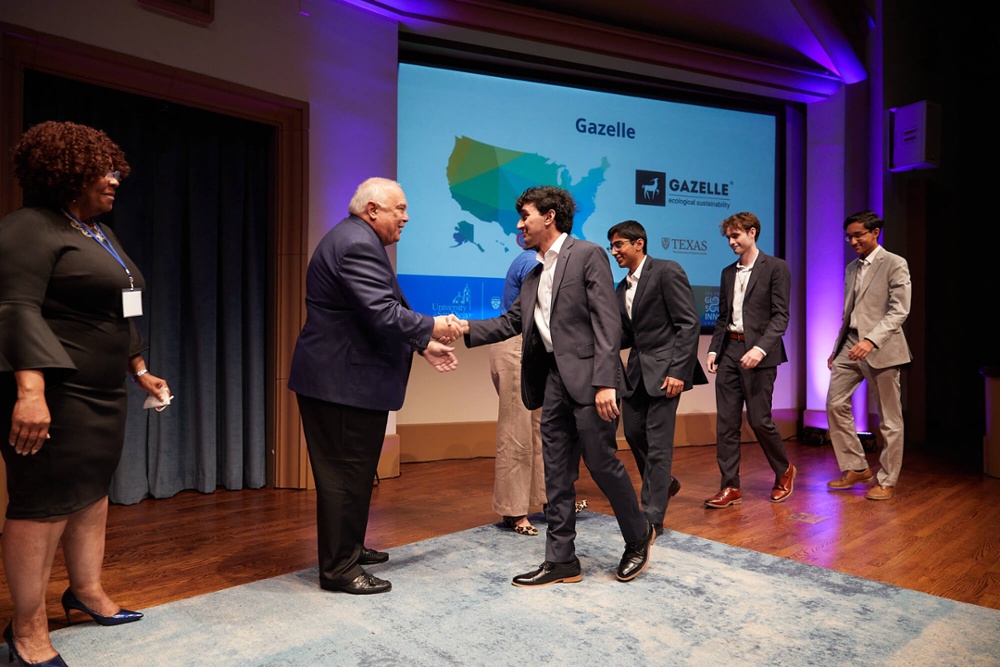Educating With the Future in Mind: Nurturing Young Entrepreneurs
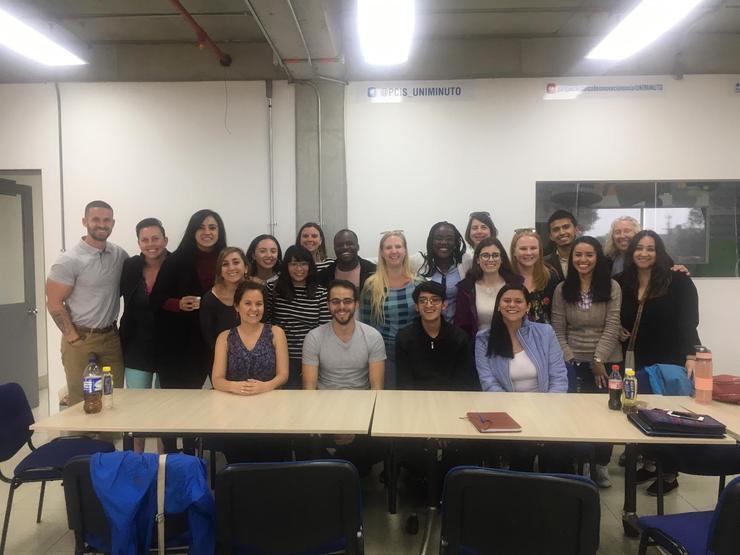 Kroc School students during their trip to Colombia
Kroc School students during their trip to Colombia
My visit to Bogotá, Colombia will remain memorable in many ways given the richness of experience it offered, most of which can only be experienced and not explained.
For context, Colombia has an extreme disparity in wealth between the country's elite and the lowest income earners, with the country’s 2017 GINI coefficient remaining the second highest in the Americas at 50.8. Each neighborhood is classified in strata ranging from one to six where one is the lowest and six is the highest. However, some communes are in the equivalent of stratum zero as they stay in condemned areas that are not recognized by the government. I was humbled to visit such areas and learn how people make it one day at a time. Reflecting on the inequality of Colombia's citizens, and considering the stake of the future generation (the children of today), I feel the call and the need to rethink ways of educating them to face the future with all the challenges it brings forth.
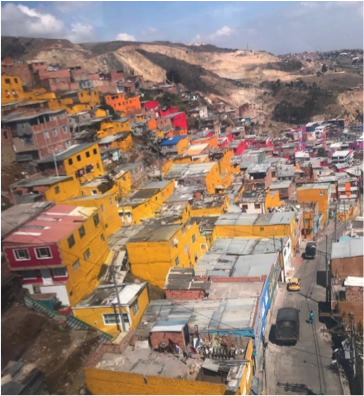
Part of the settlements in El Paraiso
Borrowing from my experience in El Paraiso at the Investing Hope Foundation, Bogotá, Colombia, empowering children effectively requires intentional incorporation of relevant skills required to thrive in the social-economic situation surrounding them. If a country has issues of ethnicity, tribal hatred or social stratification, children need to be equipped both formally and informally with skills that will help them to be more accommodating, less biased, and that which promote unity, resilience, and forgiveness among others.
Consequently, if a country has huge social-economic inequalities, empowering children effectively entails equipping them with skills that boost their creativity in developing diverse ways to help them thrive, regardless of the social-economic challenge limiting them, and thus bridging the social-economic gap.
But how do you practically teach children to be entrepreneurs without violating their rights as children? This question raised from one of my fellow USD students challenged my perspective. Thinking about it, and reflecting on the context, there is a thin line between the intersection of practically teaching children financial literacy and safeguarding their rights — it's challenging, yet achievable. Fortunately, we were able to see an example of one incredible effort preparing children to rise out of the difficult situation they currently find themselves in.
Young Social Entrepreneurs: Credit and Saving Program for Children
One of the most interesting site visits of our trip to Colombia was to a workshop in which we got to know some young social entrepreneurs and see them in action. This particular workshop was all about the business of sweets.
Cautious of the hygienic handling of their product, every child had a hair cap, mouth and nose protection, and gloves. Working in small groups, the children were busy sorting candy of different colors, sizes, and shapes for sale — creatively combining them in every possible way to make them appealing to the eyes of a potential buyer.
Another section of the workshop involved a team of children making chocolate bars decorated for different occasions. The last section included children making cookies and adding different flavors. After sorting all these different products, and packaging them beautifully, they were taken to the weighing section where the price was determined depending on the weight of the final product, at which time they were declared ready for sale.
All these sections were children-led! They had learned the skills required to successfully prepare the product and have it ready for sale and, moreover, how to make a profit from it.
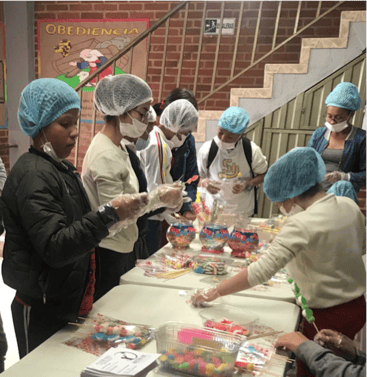
Each child was allocated a certain number of items that he/she would commit to selling throughout the week. This was recorded and the expected amount of money equivalent to the total sale of the product was noted. After the sale, the child would bring all the money collected minus the expenses incurred, and the profit was saved under that child’s name. This is done every week after school on Friday afternoon, and the children are made aware of the cumulative value of their savings.
What is the overall goal of the credit and saving program for children in El Paraiso? This program was started with the end in mind. Considering the cost of higher education in Colombia, the program is geared towards helping the children involved save enough money to attend university. Upon completion, they would be able to get a better job, and thus possibly improve their social strata.
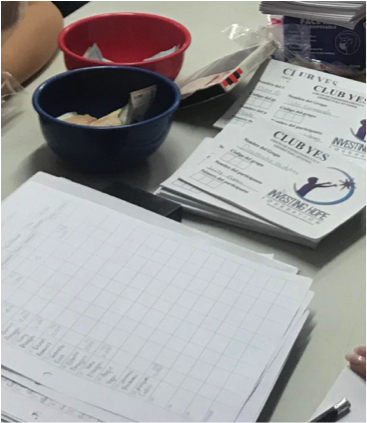
Collaborating With Schools
The program is created in collaboration with the schools these students attend. Thus, the theory is included in the school curriculum — they are taught basic money management, related values of hard work, honesty and stewardship. The practical session is an afterschool program, and thus it doesn't interfere with the children's schooling.
Unintended Consequences
Although the main goal of the program is to equip the children with financial literacy, the participating children end up improving their arithmetic performance in school as well. The practical concepts taught relate to transacting money, which benefits their usual school work as well. Additionally, the after school program helps these kids stay out of the street as they have entrepreneurial goals which they are determined to achieve, thus reducing their vulnerability to drug abuse (an unfortunately common outcome of children who aren't in such programs). Besides that, their income boosts their family income and gives them an opportunity to contribute to their own education through saving with the future in mind.
Impact
The social enterprise with tangible results helps the children increase their financial awareness, learn money management, and understand the power of savings and the value of hard work. Additionally, they learn the virtue of discipline and gain a positive sense of responsibility. Besides that, the project nurtures entrepreneurship at an early age—a skill that can be transferred in other fields when they grow up.
Takeaways
Breaking the cycle of poverty requires disrupting the norm. Something different ought to be done: something that resonates with the needs of the community and the individuals within it. The education system in many countries aims to prepare children for white-collar jobs which, ultimately, the community doesn't necessarily offer. My experience in Colombia and what I learned about these young social entrepreneurs is a challenge to all educators — asking them to innovatively come up with ways that can equip children with skills that prepare them to face the challenges of a changing world; educating their mind and hearts by nurturing creativity and innovativeness. In a nutshell, it asks schools to educate holistically with the reality of these children's future in mind.
Conclusion
Looking at the young social entrepreneurs, I felt a great sense of hope of a community redeeming itself from the gnaws of poverty that has held it hostage for years. Children learn problem-solving by being part of the solution in their child-like manner.

This post was written by Kroc School Master of Arts in Peace and Justice student, Jane Wanjiru Kinyua. Learn more about the Kroc School's graduate programs and global opportunities.
Contact:
Kevin Dobyns
kdobyns@sandiego.edu
(619) 260-7618

About the Author
The Joan B. Kroc School of Peace Studies (Kroc School) at the University of San Diego is the global hub for peacebuilding and social innovation. Founded in 2007, the Kroc School equips the next generation of innovative changemakers to shape more peaceful and just societies. We offer master's degrees in peace and justice, social innovation, humanitarian action, conflict management and resolution, and a dual degree in peace and law — programs that have attracted diverse and dynamic students from more than 50 countries. In addition to our graduate programs, the Kroc School is home to the Kroc Institute for Peace and Justice (Kroc IPJ). Founded in 2001, the Institute supports positive change beyond the classroom. Through groundbreaking research, experiential learning, and forward-thinking programs, the Kroc School and Kroc IPJ are shaping a future in which peaceful co-existence is the new normal.



